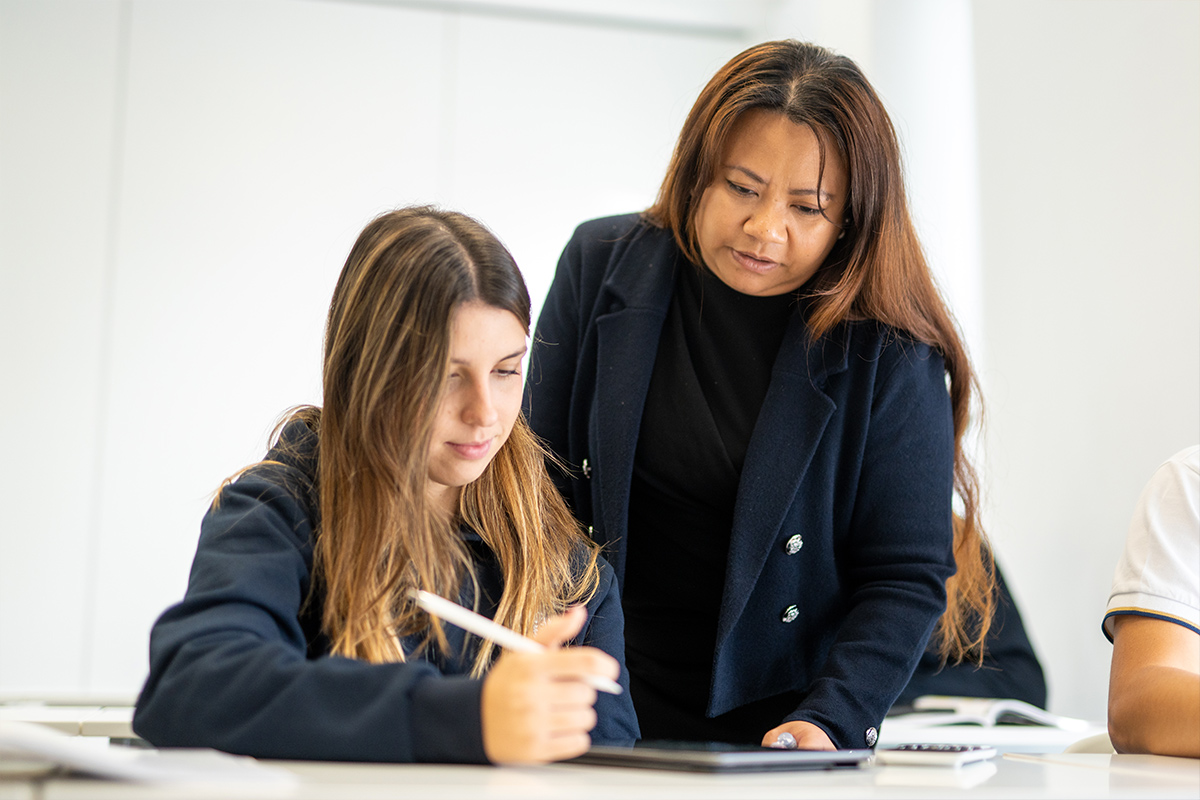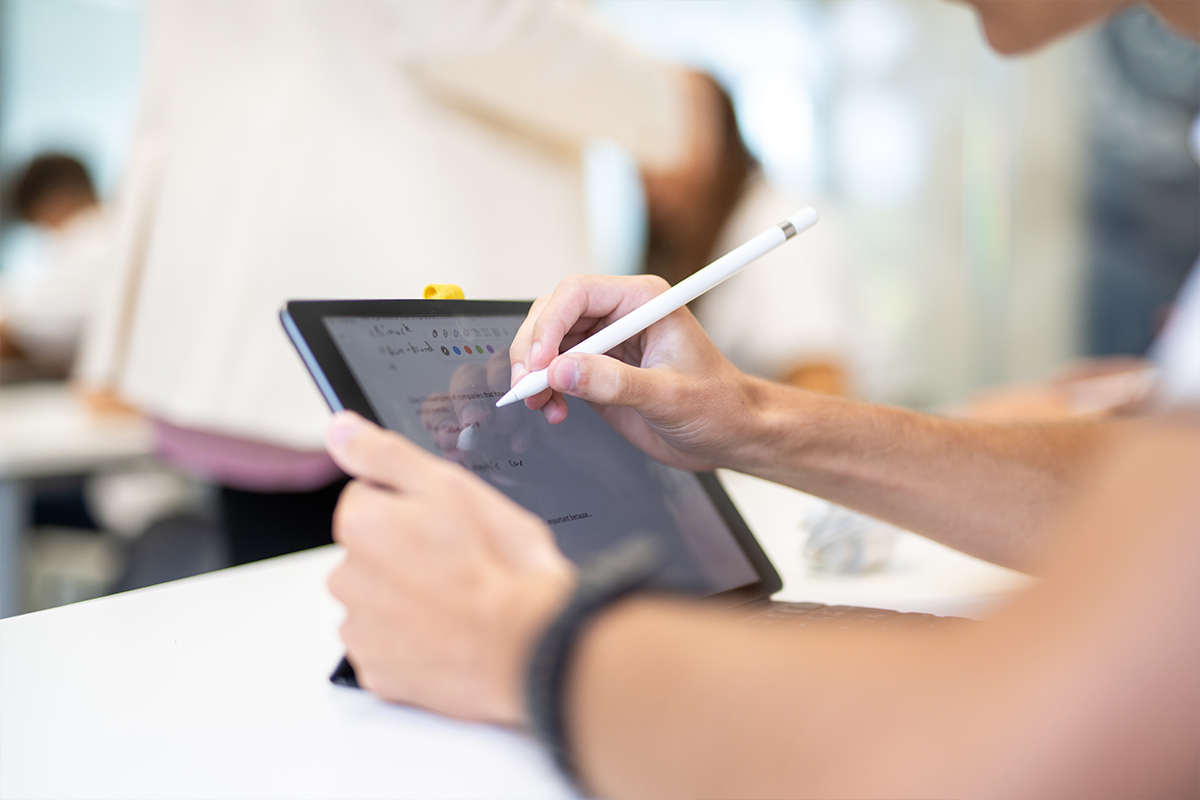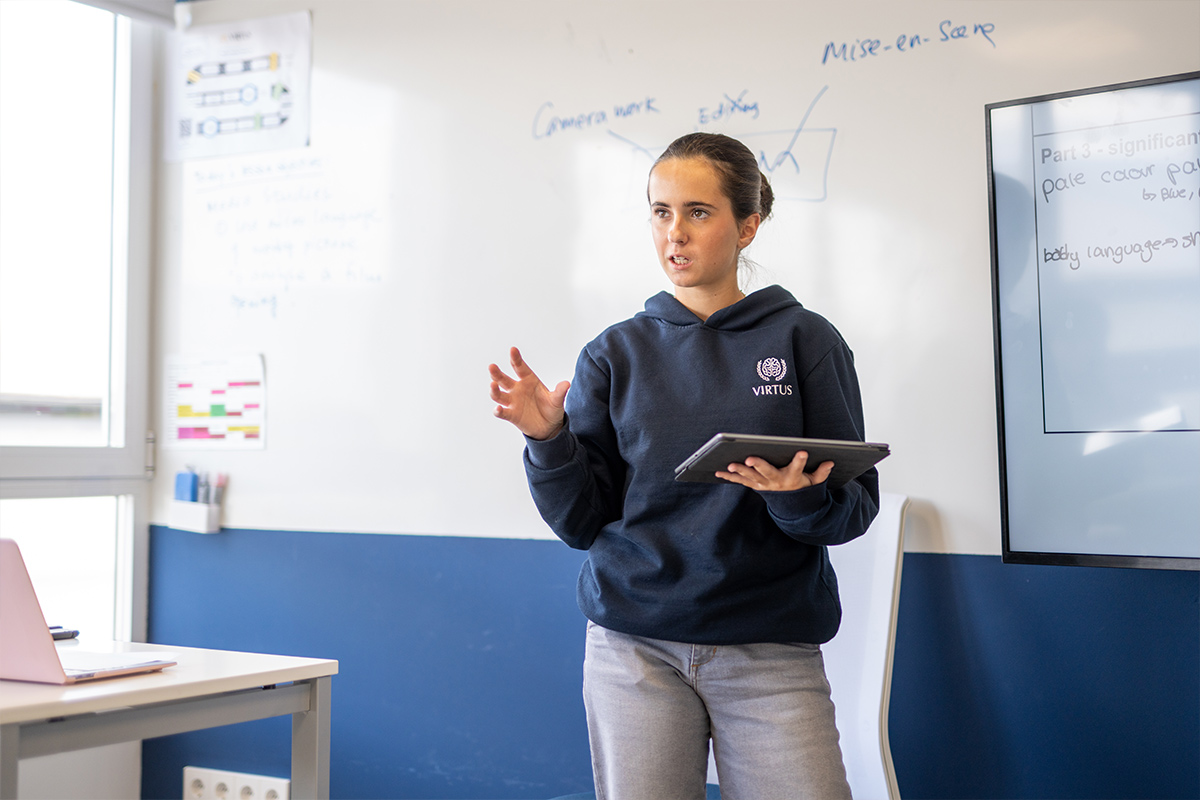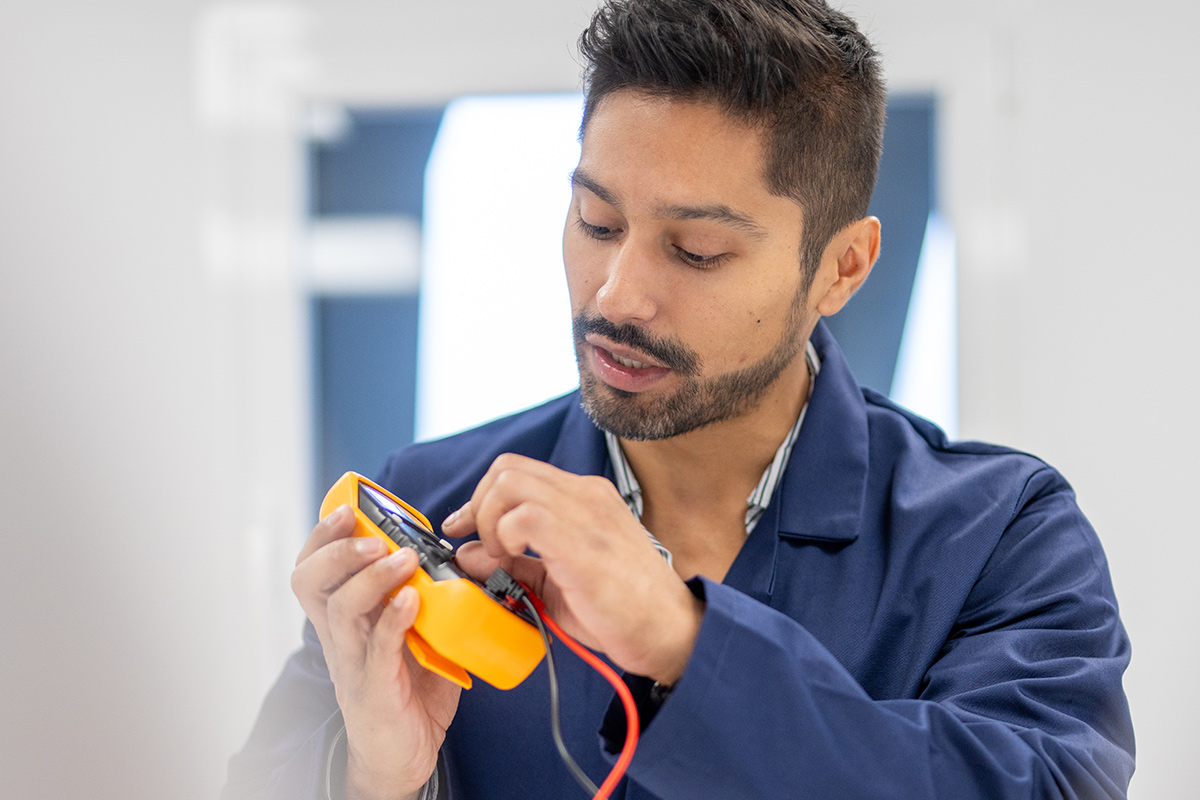Learning environment & digital education
An innovative learning strategy supported by state-of-the-art facilities and thorough training of our teachers.
Educational environment
Our educational environment draws upon the educational benefits of the best technological tools in the market, creating a context that maximises the creativity of teachers and the transmission of knowledge to our students. The use of technology streamlines our provision, enhances the communication between staff and students and teaches our students the necessary skills for a life in the 21st century. However, we also recognise the importance of traditional tools such as textbooks and paper based exam papers to facilitate learning. Therefore our educational environment encompasses this holistic hybrid model of using tools from the best of both worlds; digital and traditional. Embedding traditional learning tools such as textbooks and paper based exams enable students to draw on a range of resources to enhance their learning experience. This recognises recent research into the importance of using paper based materials to develop reading, writing and analytical skills.


A responsible use of technology
At Virtus we recognise the importance of a responsible use of technology. We implement safeguarding software on all student iPads, limiting and monitoring their access to external sources. In addition, we recognise the distracting and addictive nature of phones and we collect students’ phones in the morning and hand it back to them in the afternoon dismissal. This routine is a measure of safeguarding as well as protecting and promoting students´ wellbeing, because it ensures that students are both present in the moment when interacting with each other, as well as able to concentrate better in their lessons.
Digital education
- Teachers and students work with the best digital tools. Every student receives the latest iPad and accessories. These work as a computer, tablet, book, camera, notepad, calendar, and folder – all in one.
- Teaching and learning is designed to maximise the advantages of this technology with homework being set, submitted and marked online, using Google Classroom.
- Our teachers take advantage of this digital environment in further ways: through specific apps that help visualise concepts or by fostering competitiveness through interactive tests.
- Digital resources on the Internet help students link theoretical concepts with reality and provide a basis prior to the lesson so that they can focus on evaluation, analysis and discussion.
- For students, this represents a qualitative leap in their ability to organise themselves, take notes and use digital resources to investigate and present information.

Data and experience-based
innovation
Pedagogy, curriculum design and technological integration in the classroom constantly evolve at Virtus. We have spent years perfecting a methodology based on active learning through continuous evaluation of teaching practices. We measure the impact of the learning strategies we implement and, in parallel, conduct a profuse investigation of the practices of the best educational institutions.
Continuous
Professional Development
Teachers receive thorough training in our methodology and continuous support to improve their teaching. Through CPD (Continuous Professional Development), we connect our teachers with the best practices, the resources to maximise their creativity in the educational environment and the opportunities for their personal development as a teacher.
This includes training in special educational needs through our SEND-Co (Special Educational Needs and Disabilities Coordinator) to bring out the best in our students.


